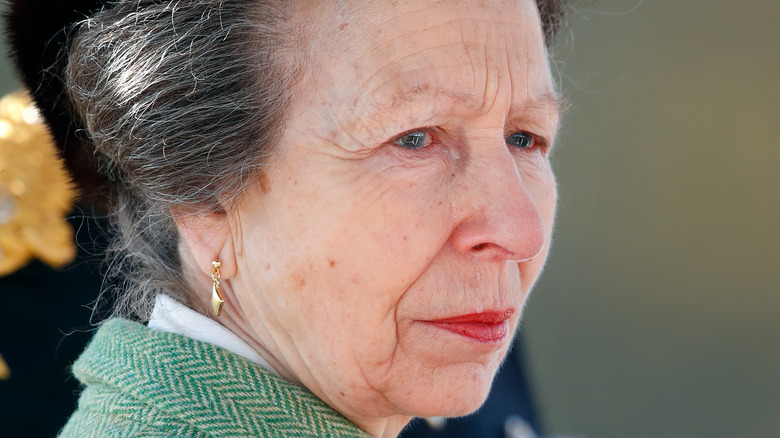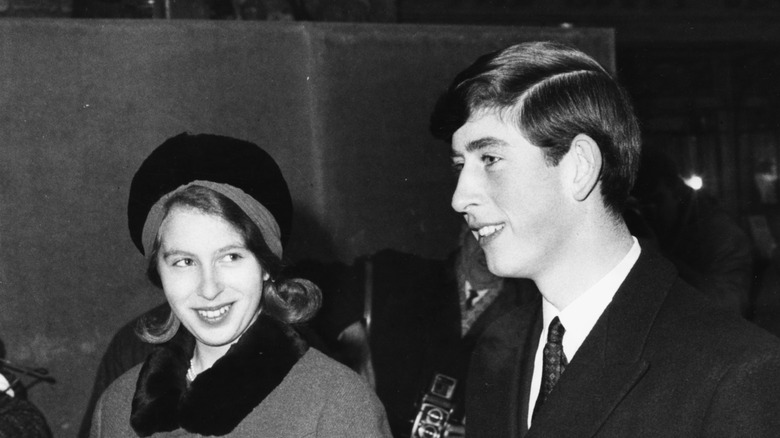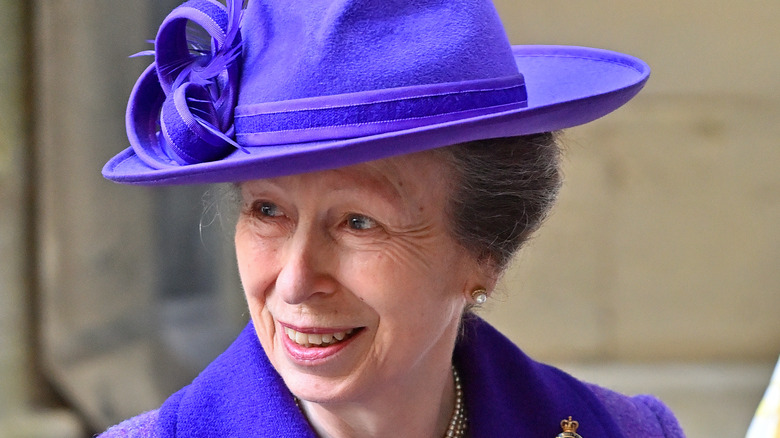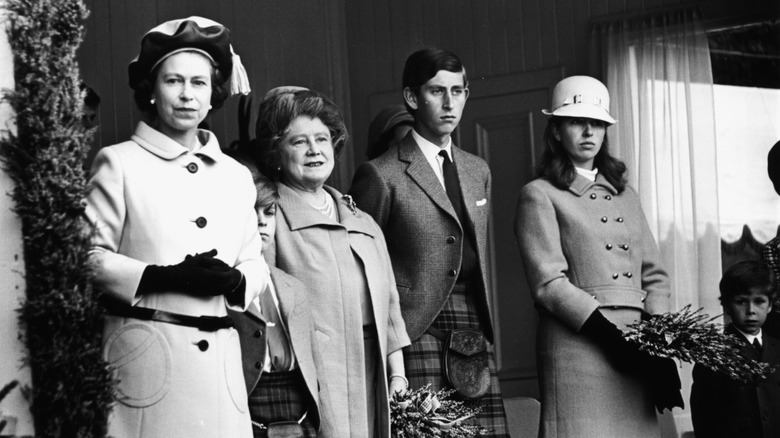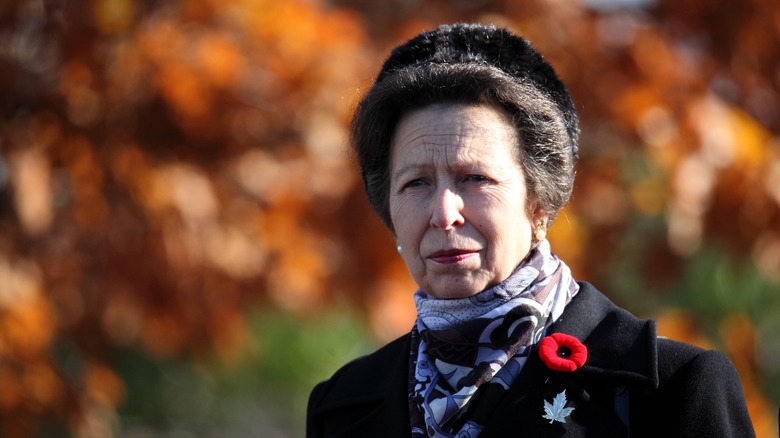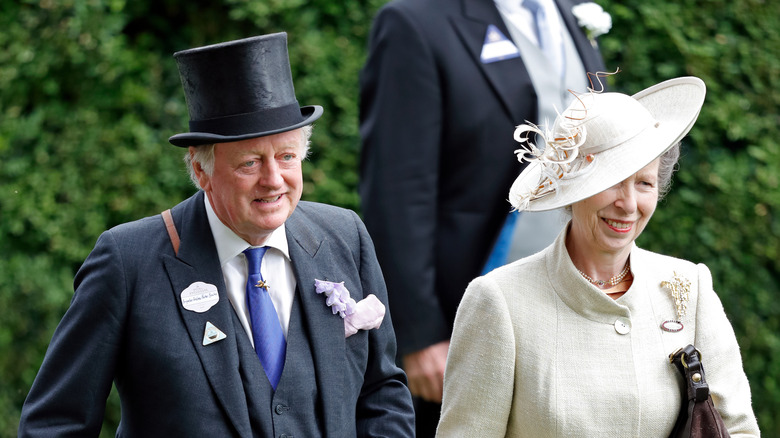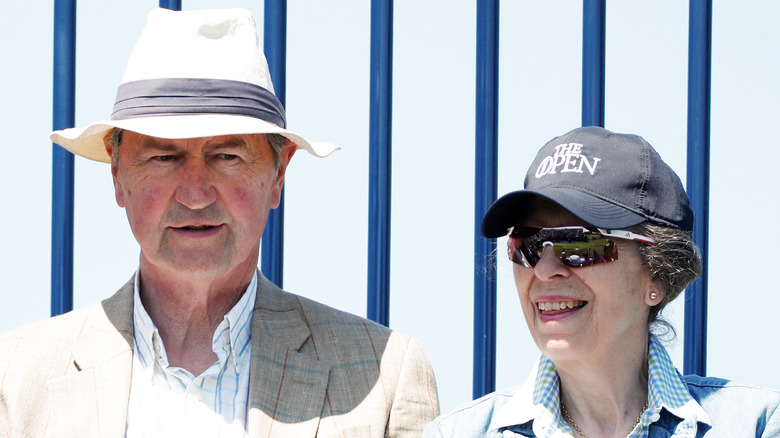Things Princess Anne Has Not Been Allowed To Do
While many of us dreamed of being a princess when we were younger, it's safe to say that the realities of the role seem less than ideal. Sure, there are tiaras and state dinners and castles, but royals around the world trade any semblance of normalcy (and privacy, for that matter) for life in the public eye. It's hard enough to imagine living a full, complicated life intertwined with love, drama, work, and family — but imagine doing all of that with cameras following you at every turn. This is the reality that Princess Anne — Queen Elizabeth's second child and only daughter — has faced her entire life, and to say that it's impacted how she has gone about her daily routine is an understatement.
Anne is known, primarily, for her dedication to the royal family and the monarchy at large. She is the definition of a team player and embodies the "grin and bear it" mentality that the royal institution has been known for all these years. But how has being a princess impacted Anne's freedom and her ability to make her own choices? Here are things that Princess Anne has not been allowed to do.
The young Princess Anne was not allowed to stay out of the public eye, despite her wishes
Some of us would think that being a princess would be an amazing experience. But for Princess Anne, being a royal was something that she didn't always enjoy, and as noted by Express, she was never really allowed to stay out of the public eye, despite her wishes to do so. While Anne grew up before the time of rampant social media, she was still followed on a regular basis and was exposed to the public at an early age. Express even noted that Anne once said that it was only "human" for her to want to keep her life private.
Of her obligation to greet royal fans in public, Anne once said, as per The Oldham Times, "We hated them, can you imagine as teenagers? Hardly the sort of thing you would volunteer to do. ... How many people enjoy walking into a room full of people you've never met before and then try a street." Anne's only solace came in the form of boarding school, where she was granted a bit more privacy (via International Business Times). But her status as a high-profile royal never came to an end.
Princess Anne will likely never take the throne
Here's something that might throw you off if you're not well-versed in all things royal family. Princess Anne might be Queen Elizabeth's second child, but she is nowhere near close to the British throne. Yes, her older brother, Prince Charles, is the heir apparent, but between Charles and Anne lie 15 other people who would take the throne before the queen's only daughter. So yes, despite the fact that Anne is the queen's second child and has lived the royal life her entire existence, she'll never be allowed to take the British throne.
So why is Anne so far down the list, despite being the queen's second-born child and one of the most hard working royals? As it turns out, it all has to do with her gender. Anne was born well before the Succession to the Crown Act was passed in 2013, meaning that her two younger brothers — Prince Andrew and Prince Edward — and their children surpassed Anne in the line of succession. So, despite being known as the most dedicated royal who attends public and charitable events, she'll never rule.
The young princess couldn't spend much time with her mother growing up
So many of us look back on our childhoods with perspective — time can heal old wounds, bring much needed clarity, and help us understand why our early years looked the way they did. For Princess Anne, her childhood was incredibly unique, and while many of us were used to having our parents around all the time, the young Princess Anne was not really allowed to spend that much time with her mother, Queen Elizabeth, in her formative years. As noted by Cheat Sheet, Anne was just 2 years old when Elizabeth took the throne. The queen was still very green at the time, and instead of having time to spend with her two young children, she was navigating her role as monarch. As such, Anne wasn't allowed to rely on her mother much and instead was largely raised by nannies.
To say that Anne's childhood was incredibly different from the common experience is an understatement, and when she was still very little, her mother went on a six-month long tour in which her children did not go with her. It is a small example of just how distant Anne was from the still-reigning monarch.
Princess Anne is not allowed to attend official engagements without security
The issue of royal security has been in the news as of late, and while it may seem frivolous, the members of the royal family are protected for good reason. When it comes to Princess Anne, she does not attend official engagements or take part in any official duties without police protection officers present, as per The Mirror. Why would someone so far away from the British throne warrant such prominent security when in public? For Anne, the answer strikes close to home.
As noted by the Independent, Anne was the subject of a kidnapping attempt back in March 1974. She was returning home from having attended a film screening when Ian Ball — a man previously not connected to the princess — tried to pull her out of her vehicle. Ball managed to take hold of Anne's arm, and when he demanded that she come with him, she retorted, "Not bloody likely." Despite her quick thinking and unfazed demeanor, Anne later told members of the press, "If there had been more than one, it might have been a different story." Required security, therefore, is a smart move.
Princess Anne was not allowed to marry this man due to religious reasons
We live for royal drama, but Princess Anne not being allowed to marry a man she loved due to religious reasons hurts our hearts. We have to go all the way back to the 1970s to tell this story, and it involves none other than Andrew Parker Bowles, Camilla Parker Bowles' first husband. As it turns out, Anne and Andrew were quite the item back in the day, and, as noted by The Mirror, the duo were quite taken with one another. However, when it came time to discuss the possibility of marriage, Andrew was not seen as a suitable option for the princess — and it all had to do with religion.
As you may know, the royal family is heavily attached to the Church of England, and due to Andrew's status as a member of the Catholic Church, a union between them would've been considered "improper." As such, Anne and Andrew called it quits. She went on to marry her first husband, Mark Phillips, and he went on to marry Camilla. Given that both of their marriages were unsuccessful, it certainly makes you wonder if things would've turned out differently if they'd been able to tie the knot.
Princess Anne and Timothy Laurence could not get married in England
Speaking of the royal family imposing restrictions on Princess Anne's love life, Queen Elizabeth's second child was not able to get married in England when she tied the knot for the second time. As noted by Hello! magazine, Anne and Sir Timothy Laurence couldn't get married in the country because of the Church of England's protocols. The church did not allow for previously divorced people to get married, and as a result, the couple traveled to Scotland in order to go through with their nuptials.
Anne's first wedding may have been a celebratory affair, but her second wedding was a very small gathering of about 30 people. Anne had just finalized a high-profile divorce at the time, so her choice to have a small ceremony does not come as a surprise. She and Laurence exchanged their vows in the Scottish Crathie Kirk church in front of royal family members as well as Anne's two children, Zara Tindall and Peter Phillips. The couple remain together to this day.
